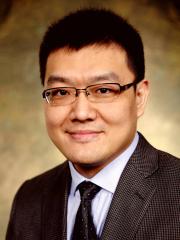
One of the most common form of manganese oxide found in nature is called todorokite, which has an internal tunnel-like structure. Although todorokite is abundant in the natural world, scientists have a tough time synthesizing this material from its layered form in a lab, even under conditions that are similar to natural environments.
Now, a team led by Georgia Tech researchers is one step closer to better understanding this puzzling mineral transformation process, with new research highlighted in the Journal of the American Chemical Society.
The group used an electrochemical method to mimic natural cyclic redox reactions that usually happen over long geological time scales. Simulation of such repeated redox reaction not only sparked and sped up the transformation of layered manganese oxide into tunnel-structured todorokite, but also revealed that “the kinetics and electron flux of the cyclic redox reaction are key to the layer-to-tunnel structure transformation”, along with explanations on the dominance of todorokite in nature.

Repeated reactions were essential, Tang explains. “We proposed a new concept that certain natural minerals may not form through a one-pot, one-run reaction, but can rather form during cyclic reactions such as repeated redox reactions. Such new concepts or mechanisms were rarely discussed previously. We used convincing data collected from manganese oxides as an example to demonstrate that such mechanisms are possible and reasonable.”
Through this and other studies, Tang Research Group in Environmental Mineralogy and Biogeochemistry addresses the complex interworking between human activities and the natural environment by exploring chemical reactions that happen at the microbe-mineral-water interface.
Tang’s researchers use lab-based analytical methods along with powerful synchrotron-based X-ray techniques. Their research aims to obtain a fundamental understanding of the fate, transport, and bioavailability of metal/radionuclide contaminants and nanoparticles, as well as the biogeochemical cycling of important nutrients in complex environmental settings.

This work was supported by US National Science Foundation under Grant Nos. 1710285, 1605692, and 1739884 to Y.T., 1706723 to H.C., and 1438648 to M.T. The use of APS, SSRL, and NSLS-II is supported by the US Department of Energy Office of Basic Energy Sciences under Contract Nos. DE-AC02-06CH11357, DE-AC02-76SF00515, and DE-SC0012704, respectively.
For More Information Contact:
renay.san@cos.gatech.edu
Renay San Miguel
Communications Officer
College of Sciences
404-894-5209
